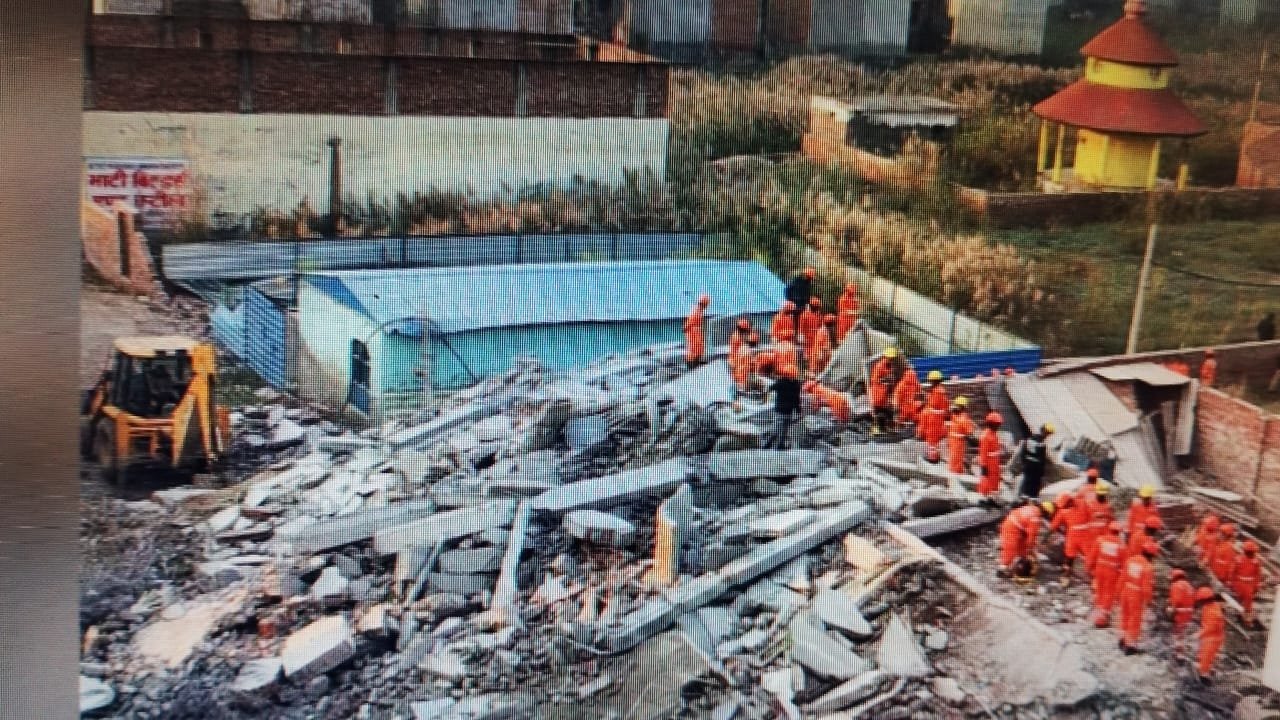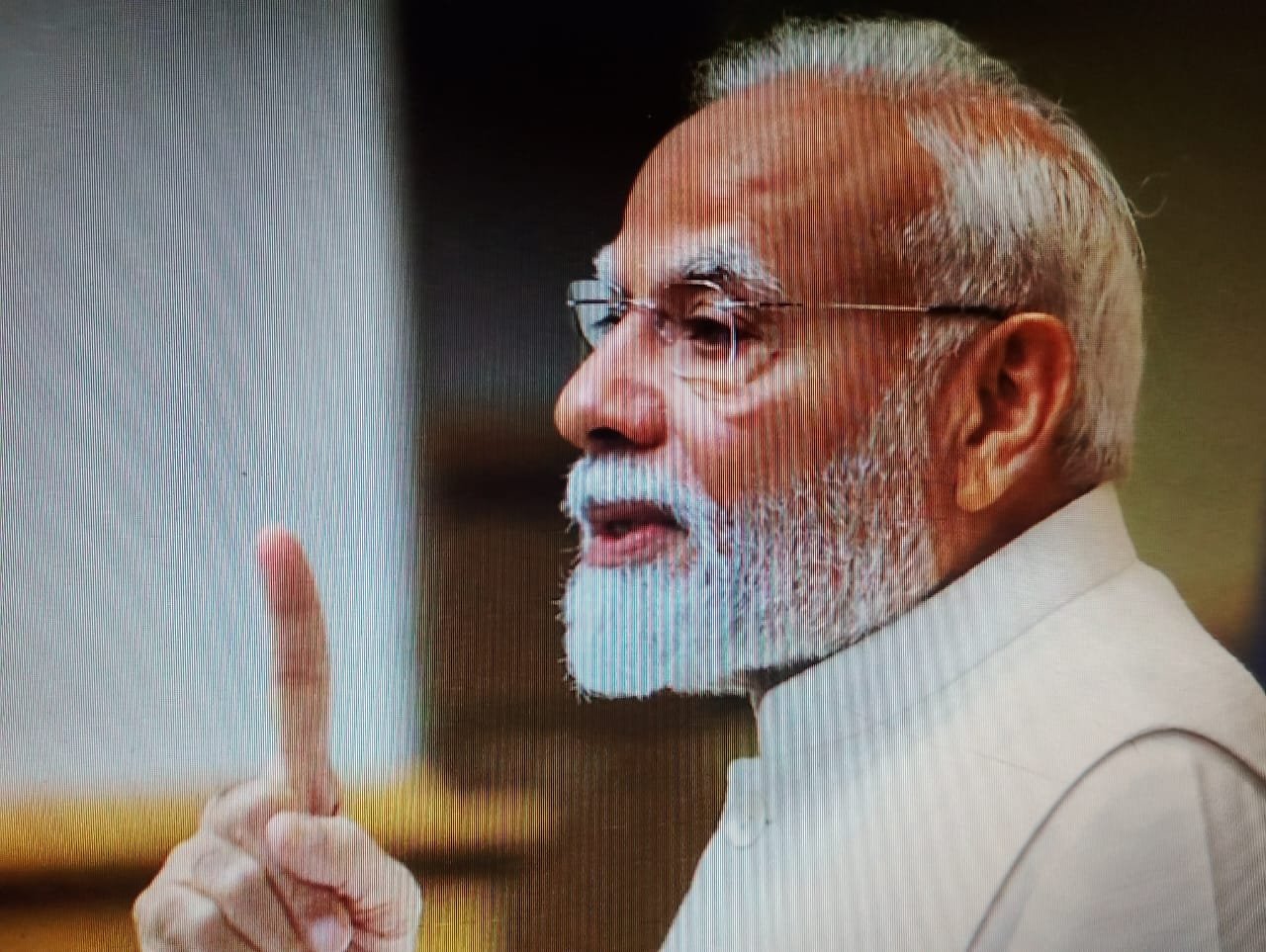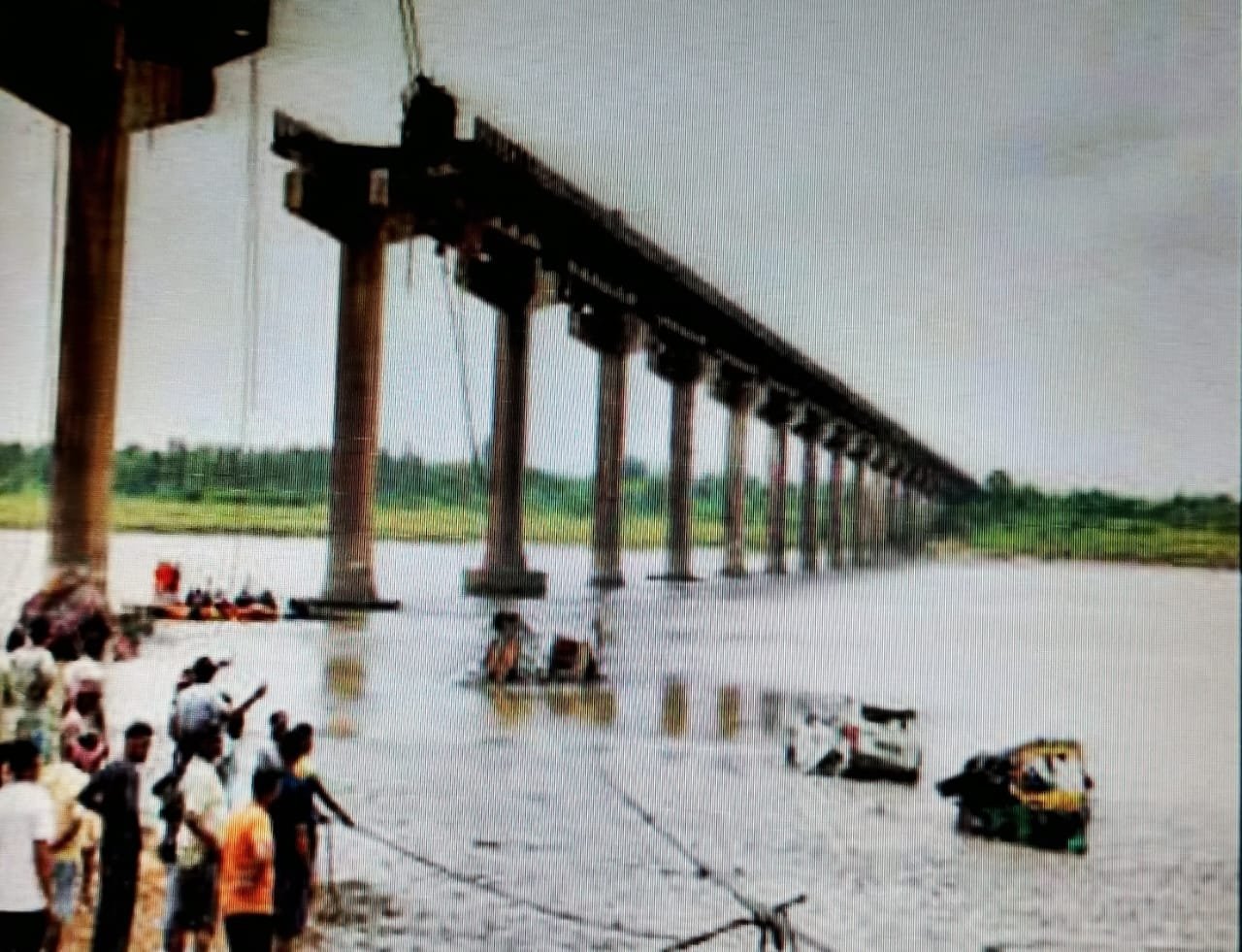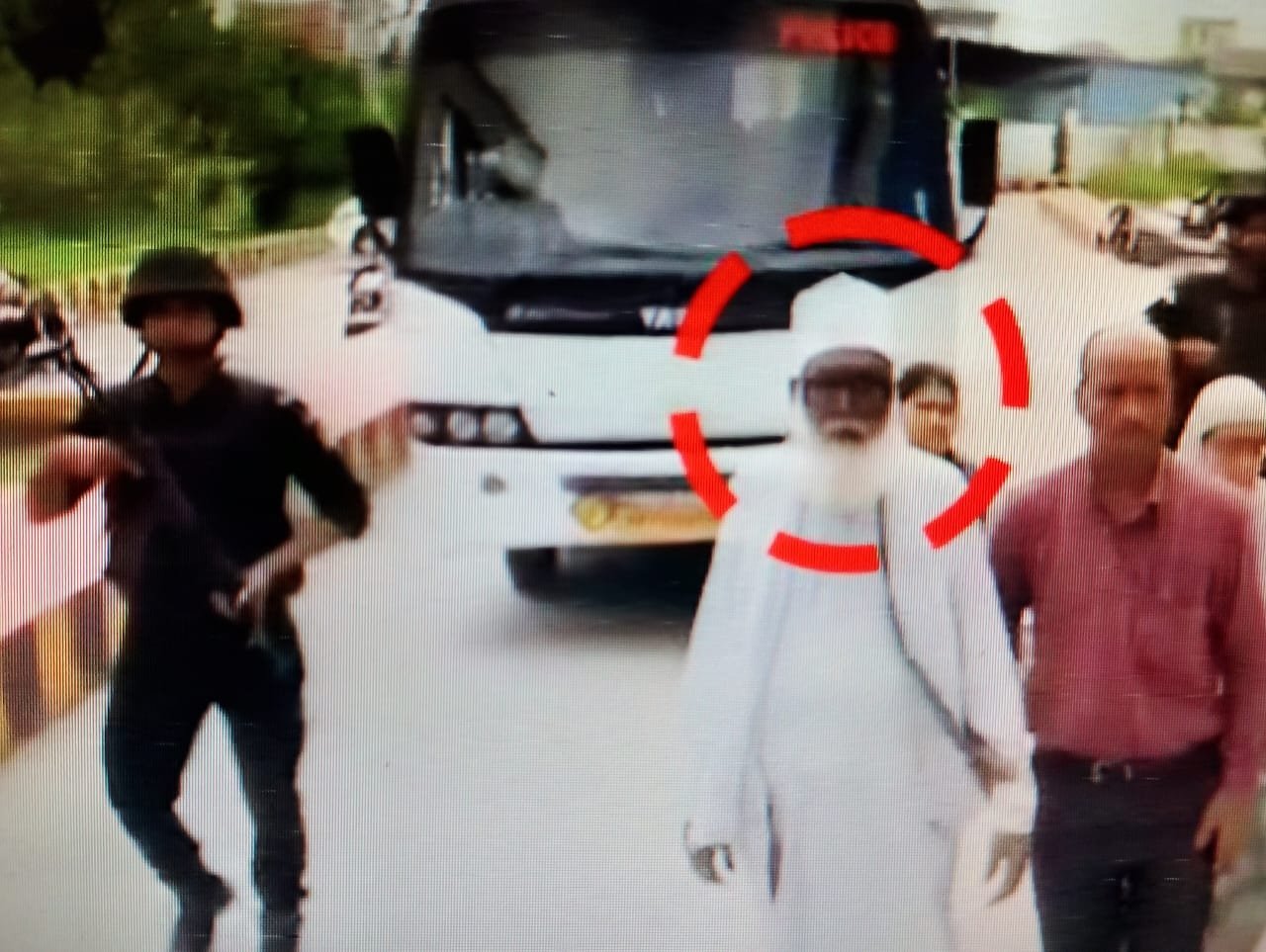India
Crisis on the Rails: Pakistan Passenger Train Hijacked by Rebel Group

Contents
Introduction to the Incident
Today, a passenger train traveling from Quetta in Balochistan toPeshawar in Khyber Pakhtunkhwa in Pakistan was hijacked by an armed group identified as a rebel faction. The incident occurred shortly after the train departed , creating an atmosphere of panic and fear among the passengers onboard. This alarming event marks a significant escalation in the ongoing tensions within the region, as such acts not only jeopardize public safety but also challenge the stability of the transportation sector.
As the hijacking unfolded, it was reported that the band of assailants, numbering approximately , managed to overpower the train’s security personnel. The perpetrators, allegedly driven by a political agenda against the government, targeted this passenger train to draw attention to their cause. Accounts from survivors depict a harrowing scene, with many passengers trapped in a situation where they felt their lives were at severe risk. Families of the passengers were left anxiously waiting at stations, desperate for any information regarding the fate of their loved ones and grappling with the uncertainties brought about by this crisis.
The hijacking not only highlights the vulnerabilities within Pakistan’s rail system but also raises critical questions regarding the underlying issues that have fostered such rebellion in the region. This incident signifies a troubling trend where public transport systems, often seen as safe modes of travel, are becoming increasingly targeted by extremist groups. The immediate repercussions of the hijacking have reverberated through the community, prompting urgent discussions regarding security measures and the need for a robust response. Authorities are now tasked with addressing the aftermath of this incident, ensuring the safety of citizens and restoring confidence in the nation’s rail network.
Background of the Rebel Group
The rebel group responsible for the recent hijacking of a passenger train in Pakistan has a complex history characterized by political, social, and economic grievances. Their origins can be traced back to the late 20th century, emerging as a response to perceived marginalization and oppression within certain regions of Pakistan. This group has consistently claimed to advocate for the rights of an ethnic or cultural community that they feel has been systematically neglected by the central government.
Over the years, the group has engaged in various forms of activism and resistance, initially focusing on non-violent methods such as protests and advocacy. However, as these efforts did not yield the desired outcomes, they gradually shifted towards more militant tactics. Their previous activities have included sabotage of infrastructural projects, which passenger believe threaten the local populace and environment, as well as targeted attacks against governmental and military personnel whom they perceive as agents of oppression.
Ideologically, the group espouses a mixture of nationalism and separatism, underpinned by deep-seated beliefs that their community deserves autonomy and recognition within the broader national context. This ideology has been reinforced by a narrative of historical grievances, including land dispossession, cultural erasure, and economic exploitation. Consequently, their resort to extreme measures, such as the recent hijacking, is often justified within their framework as a necessary act of desperation to draw attention to the plight of their community.
Furthermore, the group receives varying degrees of support from local sympathizers who share their frustrations toward government policies and feel that diplomacy has failed them. Thus, the complexities surrounding the motivations of this rebel group illustrate a broader crisis within Pakistan, driven by longstanding issues of inequality, disenfranchisement, and insufficient governmental response to local needs.
Details of the Hijacking
The recent hijacking incident involving a passenger train in Pakistan has sent shockwaves through the nation, drawing both local and international attention. The hijacking took place in the late afternoon, when the train was making its scheduled route between key cities. Eyewitness accounts reveal that a group of approximately ten armed individuals stormed the train, taking advantage of a moment when the train was forced to stop due to technical issues. The attackers swiftly gained control, threatening passengers and crew alike, which led to a panic-stricken atmosphere inside the train.
Initial reports suggest that the hijackers were affiliated with a powerful rebel group known for its longstanding grievances against the government. They demanded the release of certain political prisoners and a halt to government operations in their region, showcasing the ideological motivations behind their actions. The dynamic between the hijackers and the authorities unfolded rapidly, with the government initiating emergency protocols in response to the crisis. Security forces were deployed to the vicinity of the incident, engaging in negotiations while also preparing for a potential rescue operation.
Passengers on board reported harrowing experiences, as they were subjected to threats and intimidation from the armed group. Many described a sense of helplessness during the chaotic moments of the hijacking, with some individuals attempting to hide or escape the immediate danger. Reports of injuries sustained during the initial takeover have also emerged, further complicating the situation and increasing public concern. The authorities’ initial responses included attempts to establish communications with the hijackers, alongside coordination with medical teams to prepare for any potential aftermath. The effectiveness of these strategies remains under scrutiny as the situation evolves, highlighting the complex interplay between insurgency and public safety in the region.
Casualties and Hostages
The recent hijacking of a passenger train in Pakistan by a rebel group has left an indelible mark on the nation, reverberating through countless families and communities. Initial reports suggest that the number of hostages taken during this incident could exceed fifty individuals, many of whom comprise women and children, further heightening the urgency of the situation. The group behind the attack has claimed responsibility, asserting a political motive behind their actions; however, the human cost cannot be understated.
Casualty figures, while still emerging, have raised significant concerns among authorities and the public alike. There are reports indicating that several passengers sustained injuries during the chaos of the hijacking, as desperate attempts were made to escape from the gunmen. Witnesses have described scenes of panic and fear as the assailants sought to assert control over the train, leading to an atmosphere of dread that permeated the carriage. Families of the affected individuals have expressed profound anguish, fearing for their loved ones’ safety and well-being as they wait for official updates.
Statements from relatives of the hostages reveal a heartbreaking tableau of desperation. One family member articulated their sense of helplessness, detailing how they are anxiously awaiting news while grappling with the uncertainty surrounding the fate of their loved one. Such personal accounts highlight the emotional toll this incident has taken, reinforcing the understanding that every statistic represents an individual with loved ones who are deeply affected by the situation. As discussions unfold regarding the potential resolutions, the human suffering at the core of this crisis must remain at the forefront of public consciousness.
Government Response
The recent hijacking of a passenger train in Pakistan has prompted an immediate and multifaceted response from the government and law enforcement agencies. As soon as the alarming news broke, the federal authorities convened an emergency meeting to strategize an effective approach to the crisis. The primary focus has been on ensuring the safe release of hostages held by the rebel group responsible for the act.
To facilitate negotiations, the government established a dedicated task force composed of senior law enforcement officials and experts in crisis management. This team has engaged with representatives of the rebel group, seeking to open communication channels aimed at resolving the situation peacefully while prioritizing the safety of the passengers. The government has expressed its commitment to non-violent resolution methods, emphasizing the importance of dialogue over military action in such sensitive circumstances.
Simultaneously, significant security measures were implemented at strategic locations across the country. Military and paramilitary forces were deployed to reinforce law enforcement agencies, particularly in areas surrounding the hijacking site. Checkpoints were established, and security reinforcements were heightened to prevent any potential escalation or further incidents. The government’s proactive stance underscores its dedication to maintaining public safety during such turbulent times.
Public statements made by high-ranking officials have also played a crucial role in shaping the narrative surrounding the crisis. The government has sought to provide timely updates to the public, assuring citizens that efforts are underway to resolve the situation and expressing solidarity with the affected families. While the outline of the government’s response appears well-structured, questions remain regarding its effectiveness in actually ensuring the safe return of the hostages. Experts suggest that the success of the negotiations hinges as much on the government’s diplomatic engagement as on its capability to manage security forces effectively throughout the process.
Public Reaction and Media Coverage
The hijacking of the passenger train in Pakistan has provoked a strong public response, notably across various social media platforms. Videos and messages flooded the internet, illustrating a mixture of shock, anger, and sympathy towards the victims and their families. Many users expressed their concerns regarding safety and security in the region, highlighting the potential for such incidents to escalate in the future. Social media has been pivotal in galvanizing public sentiment, with numerous hashtags trending, calling for justice and enhanced security measures for train passengers.
Furthermore, the event sparked a wave of protests in several major cities, as citizens demanded prompt government action to address escalating violence and to hold the perpetrators accountable. The visual and emotive nature of protests aided in drawing national and international attention to the precarious situation faced by Pakistani citizens in the face of such militant threats. Support for the victims materialized not just through visual acts of solidarity, but also through fundraising campaigns and community initiatives aimed at assisting the families and passenger affected by this tragic incident.
In tandem with public response, media coverage of the hijacking has been extensive and varied. Mainstream news outlets provided continuous updates, while investigative journalism sought to unravel the motivations behind the rebel group’s actions. However, this incident also witnessed the spread of misinformation. Some reports exaggerated details or promoted incorrect narratives, potentially inflaming public fear. It has become critical for both media and consumers of news to discern credible sources to avert misunderstanding and unnecessary panic. Overall, the combination of public engagement and media portrayal has shaped the national discourse surrounding this crisis, highlighting the complexities of communication in times of conflict.
Impact on Transportation and Security
The recent hijacking of a passenger train in Pakistan by a rebel group has sparked significant concerns regarding the safety and security of the nation’s transportation infrastructure. As the incident unfolds, it serves as a critical wake-up call for authorities to reassess and strengthen security protocols for train travel. This event could potentially lead to an overhaul of existing regulations governing passenger safety, ensuring that adequate measures are in place to protect travelers and prevent similar occurrences in the future.
In light of this incident, officials may introduce more stringent security checks at train stations, including enhanced surveillance technology and increased presence of security personnel. The National Railway Authority might also consider implementing a system for passengers to report suspicious activities, which could foster a more vigilant travel environment. It will be essential for railway management to improve coordination with law enforcement agencies to facilitate rapid response strategies in scenarios similar to the recent crisis.
This unfortunate hijacking has broader implications not just for security policies but also for passenger confidence in using rail services. Potential travelers may develop trepidations regarding their safety while aboard trains, leading to a decline in patronage. Consequently, the railways may face a downturn in ridership, which could adversely affect the financial sustainability of transport services across the region. To mitigate the erosion of passenger trust, communication from railway authorities will be vital. Clear updates on improvements in security measures and their implementation will help reassure travelers.
Furthermore, the incident may prompt a nationwide discourse concerning the resilience of the infrastructure itself and its ability to withstand threats from extremist groups. Overall, the repercussions of the hijacking are expected to send ripples through the transportation sector, influencing both policy and passenger behavior moving forward.
International Reactions
The hijacking of a passenger train in Pakistan by a rebel group has elicited strong reactions from various international stakeholders, including foreign governments, international organizations, and human rights groups. Many nations have expressed their concern regarding the security implications of such incidents. The United States, for instance, issued a statement condemning the attack and reaffirming its commitment to working with Pakistan to combat terrorism and bolster regional stability. The incident serves as a stark reminder of the ongoing security challenges faced by the region, further underscoring the necessity for collaborative international efforts to address terrorism.
Additionally, the European Union has highlighted the potential ramifications of this event on Pakistan’s internal stability and global security dynamics. Their officials emphasized the importance of addressing the root causes of extremism in the region and have called for a comprehensive approach to security that includes not just military measures, but also economic and social development strategies. This approach aims to mitigate the spread of violent extremism, thus fostering a safer environment for civilians in affected areas.
Human rights organizations have also weighed in on the incident, expressing grave concerns about the safety of passengers and the impact of such violence on civilians. They stress that the protection of civilians must remain a priority in strategies addressing terrorism. Some analysts believe that the reactions and statements from these international actors could have significant implications for Pakistan’s foreign relations, particularly in terms of its alliances and partnerships focused on security and counter-terrorism efforts.
The hijacking incident exemplifies the complexity of global security challenges, reiterating the interconnectedness of nations in the fight against terrorism and the need for ongoing dialogue and cooperation in addressing these pressing issues.
Summary and Future Outlook
The recent hijacking of a passenger train in Pakistan by a rebel group has raised serious concerns regarding the country’s internal security and the safety of its citizens. This incident not only drew national and international attention but also underscored the vulnerabilities in the country’s transportation infrastructure. As authorities seek to manage the aftermath of this crisis, it is imperative to reflect on various possible scenarios that may unfold in the forthcoming weeks and months.
One of the immediate priorities will be negotiations for the safe return of the hostages. Historically, hostage situations have been used as leverage by rebel groups to negotiate demands, which often include political concessions or release of their own members. The government’s response to these demands will play a crucial role in shaping the next steps in this crisis, along with public sentiment, which has been notably critical of the current state of security in the country.
Moreover, the response from the rebel group following their action will be instrumental in determining future violence levels. If the group perceives a successful outcome from this hijacking, it may embolden them to engage in similar actions, thereby threatening broader national security. Consequently, it becomes essential for the government to adopt a multi-faceted approach that combines immediate crisis management with long-term strategies aimed at addressing the root causes of militancy.
Part of this strategy should involve enhancing community engagement, improving intelligence operations, and fostering dialogue with moderate elements within the insurgent groups. By doing so, the government may not only work towards restoring safety and security but also contribute to preventing the recurrence of such violent incidents in the future. Addressing these challenges comprehensively is vital, not only for the affected communities but also for the nation as a whole.
Accident
CM Rekha Gupta Orders Probe into Building Collapse in North-East Delhi, DM to Submit Detailed Report

Contents
New Delhi, July 12, 2025
A tragic building collapse in the Karawal Nagar area of North-East Delhi on Saturday sent shockwaves through the region. The multi-storey structure crumbled suddenly, leaving several people injured, while a few are still feared trapped under the debris. Rescue and relief operations are currently underway at full speed.
Taking immediate note of the incident, Delhi Chief Minister Rekha Gupta has ordered a high-level investigation and directed the District Magistrate (DM) to submit a detailed report within 48 hours. Speaking to the media, she said, “Strict action will be taken against anyone found responsible for this tragedy. There can be no compromise when it comes to public safety.”
Administration Swift in Relief Operations
Teams from the NDRF and Fire Department reached the site promptly and are working tirelessly to clear the rubble. According to local residents, the building had visible cracks for quite some time, but no significant action was taken in advance.
Questions Raised Over Illegal Constructions
This incident has once again raised serious concerns about unauthorized constructions and alleged corruption in the building permit system in Delhi. The Chief Minister emphasized the need for stricter ground-level enforcement. “It’s time for the administration to act firmly against illegal structures and ensure accountability at the ward level,” she asserted.
Support and Compensation for Victims
The Delhi government has announced that it will bear the full cost of treatment for those injured in the incident. Compensation procedures for the families of the deceased have also begun. CM Rekha Gupta personally visited the hospital to meet the injured and instructed doctors to provide special care.
India
Wave of Employment Across India: Job Fairs Held in 47 Cities, 51,000 Youths Receive Appointment Letters

Contents
New Delhi, July 12, 2025
Saturday morning brought new hope for the youth of India as Prime Minister Narendra Modi, through video conferencing, virtually participated in employment fairs held across 47 cities and distributed over 51,000 appointment letters to newly selected candidates. These weren’t just ordinary documents—they symbolized the first step toward the dreams of thousands of young Indians, ready to build their own future.
“No Recommendations, No Bribes” — Jobs Now Based Solely on Merit
Addressing the event, Prime Minister Modi emphasized the government’s commitment to a transparent, fair, and efficient recruitment process.
“Today, jobs in India are no longer handed out through influence or favors, but through talent. This is the identity of the New India,” said PM Modi.
He further reiterated that young aspirants no longer need backing or bribes to secure government jobs. The government’s “No Recommendation, No Expense” initiative reflects this very principle.
Confidence Shines on Young Faces
One of the selected candidates from Jaipur, Rajasthan, Miss. Sharma, shared her experience with visible emotion:
“I never thought I’d get a government job without any connections or under-the-table payments. This government has made that possible. I can now see the dreams of my family shining in their eyes—and mine.”
Youth Power Will Build the Nation
The Prime Minister urged the newly recruited youth to treat their roles not just as jobs, but as opportunities for nation-building.
- “Wherever you are posted, your dedication and work ethic will shape the future of the country,” he said.
Art
Orange Day Adds a Splash of Joy at DAV Centenary Public School, Jaipur

Jaipur, July 10, 2025
The tiny tots of DAV Centenary Public School, Jaipur lit up the campus as they came dressed in cheerful shades of orange to celebrate Orange Day with great excitement and enthusiasm.
The pre-primary wing turned into a lively sea of orange—from clothes and accessories to creative decorations—all reflecting the spirit of joy, creativity, and energy that the colour symbolizes. Teachers thoughtfully planned the day to help children not just enjoy, but also learn the meaning behind the colour orange—a symbol of hope, enthusiasm, and prosperity.
The classrooms were buzzing with laughter and activity as the little learners took part in various fun-filled games, storytelling, drawing, and creative expression sessions. To boost their communication skills, each child was encouraged to bring an orange-coloured object from home and speak a few lines about it in front of their classmates. For many, it was their first public speaking moment, and they did it with adorable confidence.
Principal Mr. A.K. Sharma visited the classrooms to cheer on the children. He appreciated the thoughtful planning of the teachers and said, “Activities like these help children build confidence, express themselves freely, and connect learning with real-life experiences.”
It was a delightful sight to watch the little ones bursting with curiosity, dressed in glowing orange, exploring and expressing themselves. The day left behind not just smiles and laughter, but also a colourful memory in the hearts of the young students.
Accident
Vadodara Bridge Tragedy: Death Toll Rises to 19, Two Still Missing – Rescue Operations Continue in Mahisagar River

Contents
Vadodara (Gujarat), July 11, 2025
A heart-wrenching incident has shaken Gujarat as the Gambhira–Mujpur bridge over the Mahisagar River in Vadodara district collapsed unexpectedly. So far, 19 people have lost their lives, while 2 individuals remain missing. Rescue teams have been relentlessly working for the third consecutive day in the hope of saving lives and retrieving the missing.
How Did the Tragedy Happen?
The incident occurred on the morning of July 9, when several vehicles were crossing the bridge. Suddenly, a major section of the bridge collapsed into the river, dragging with it two trucks, an SUV, a pickup van, an auto-rickshaw, and two motorcycles. The bridge was nearly 40 years old, and multiple complaints had been made about its deteriorating condition.
Victims Identified, Families Devastated
So far, 18 bodies have been recovered from the debris, while one critically injured person succumbed to injuries at the hospital, taking the total death toll to 19. Among the victims were women, children, and entire families who were out on a pilgrimage for Guru Purnima.
Search Operations Still Underway
Rescue efforts by NDRF, SDRF, and fire brigade teams are still ongoing. The operation is facing major challenges due to the river’s depth, strong current, and over 10 feet of thick mud, making it difficult to access submerged vehicles. Cranes, boats, and divers are being deployed to find the two missing persons.
Government Response and Action
In the wake of the incident, the state government swiftly suspended four engineers and has ordered a detailed investigation into the bridge collapse. The government has also announced financial compensation of ₹2 lakh to the families of the deceased and ₹50,000 for the injured.
Public Outrage and Unanswered Questions
Local residents claim the bridge was already in a dangerous condition, but authorities failed to take timely action. Media reports reveal that just days before the tragedy, a journalist had posted a video highlighting the poor state of the bridge, which went ignored.
This incident has once again exposed the negligence and oversight in maintaining public infrastructure. Behind every number is a grieving family – a shattered home, a mother who lost her child, a father never to return. The need of the hour is strict accountability, immediate structural audits, and long-term corrective measures — so that such a tragedy never repeats itself.
Education
Guru Purnima Celebration at DAV CPS, Jaipur – A Heartfelt Tribute to Guiding Lights

Jaipur | July 10, 2025
In an atmosphere filled with devotion, gratitude, and inspiration, DAV Centenary Public School, Vaishali Nagar, Jaipur celebrated Guru Purnima with heartfelt enthusiasm on Thursday, July 10. The event turned out to be more than just a celebration—it was a beautiful expression of love and respect for the teachers who illuminate the path of learning for their students.
The morning assembly set the tone for the day with the soothing sounds of shlokas dedicated to gurus, creating a spiritually charged environment across the campus. The essence of the celebration was beautifully captured in a speech that explained the cultural and historical roots of Guru Purnima, reminding everyone of the powerful legacy of the guru-shishya tradition.
Students poured their hearts out through soulful poems, melodious songs, and inspiring speeches, each echoing a shared sentiment—deep respect for their mentors. A mesmerizing classical dance performance, portraying devotion and reverence towards gurus, stole the spotlight and left the audience spellbound.
One of the most touching moments of the day was when the students presented a handmade gratitude card to Principal Mr. A.K. Sharma, who has been a constant source of wisdom and encouragement. In his address, Mr. Sharma reflected on the irreplaceable role of teachers in shaping young minds and urged students to stay rooted in values, discipline, and lifelong learning.
“The presence of a guru in one’s life is a blessing,” he said. “True success comes not just from knowledge, but from the humility to keep learning.”
The event concluded on a thoughtful note, leaving everyone—teachers, students, and staff—feeling more connected, more thankful, and more inspired. Guru Purnima at DAV CPS was not just an event, but an experience that reminded all of the timeless role of a teacher—not just in the classroom, but in life.
Crime
Indian Nurse to Be Hanged in 6 Days in Yemen — The Heartbreaking Story of Nimisha Priya, Who Gave Her Partner a Sedative That Turned Deadly

Contents
Thiruvananthapuram / Yemen | July11, 2025
Once a hopeful young nurse from Kerala, Nimisha Priya is now counting her final days in a Yemeni prison. Her crime — administering a sedative that led to the death of her Yemeni business partner, Alkhader Al-Omari. Her punishment — execution by hanging on July 13, 2025.
But behind this grim sentence lies a story much more complicated — one filled with ambition, control, fear, and a moment that changed everything.
A Nurse with Dreams, and a New Life Abroad
Nimisha Priya wasn’t a criminal when she left India. She was a caregiver — a skilled nurse with dreams of building a better life. In Yemen, she found work, opened a clinic, and partnered with Alkhader Al-Omari, a local man who helped her navigate the foreign land.
But what started as a partnership slowly turned into a prison.
Trapped in a Toxic Relationship
Reports from the time suggest that Al-Omari soon took control of more than just the clinic. He allegedly confiscated Nimisha’s passport, isolated her, and began mentally and physically abusing her. He took over her earnings and threatened her when she talked about returning home to India.
Far from family, friends, or legal protection, Nimisha felt completely trapped — her life and freedom in the hands of a man who, she believed, would never let her go.
The Night It All Changed
Then came that fateful night in 2017.
According to court documents, Nimisha gave Al-Omari a high dose of a sedative. Her stated intention was not to kill him, but to make him unconscious, retrieve her passport, and escape. But the sedative proved too strong — Al-Omari died.
Panic set in. Nimisha reportedly dismembered his body and tried to hide the evidence in a water tank. A gruesome and desperate act that, once discovered, left her no room to explain.
A Death Sentence, and a Race Against Time
The Yemeni court ruled the act pre-meditated murder and sentenced Nimisha to death by hanging.
For years, legal teams in India and Yemen pleaded for clemency. Activists pointed to the abuse she suffered, to the desperation of a woman with no escape, and to her otherwise clean record. Her mother, in tears, begged the Yemeni family for forgiveness, hoping for a “Diya” — blood money — a custom in Yemen that allows the victim’s family to pardon the accused.
But that pardon never came.
Only Six Days Left…
Today, Nimisha Priya is a prisoner not just behind bars, but in time. With just six days left, she awaits her execution. Her mother is still trying — hoping against hope — for one final miracle.
Meanwhile, millions in India are asking:
Was she a murderer? Or a victim of circumstance, trying to survive in a world where no one came to help?
Beyond the Verdict
This is not just Nimisha’s story. It’s the story of thousands of Indian women who work abroad, often with little protection. It’s the story of how desperation can drive someone to the edge, and how the law — especially in foreign lands — rarely leaves room for the grey in between.
Crime
India’s Biggest Scam You Never Heard Enough About — ₹49,000 Crore Vanished, 5 Crore Lives Shattered, And Now… One Big Arrest

Contents
Lucknow | July 11, 2025
In what could be one of the biggest financial frauds in India’s history, the curtain has finally started to lift. The Uttar Pradesh Economic Offences Wing (EOW) has arrested Gurnam Singh (69) — the key director behind Pearls Agrotech Corporation Ltd (PACL) — from Punjab’s Ropar district.
His crime? Allegedly orchestrating a ₹49,000 crore Ponzi scheme that duped nearly 5 crore investors across India.
This wasn’t just about money. It was about dreams sold and lives broken — mostly belonging to farmers, small shopkeepers, daily wage workers, and middle-class families who trusted PACL with their hard-earned savings.
The Dream That Turned Into a Trap
PACL promised affordable land investments. The plan sounded simple — invest now, and in a few years, you’d either get a valuable land parcel or high returns.
But behind the glittering promises lay a hollow scam.
No land. No returns. Just a web of false paperwork and delayed answers — until one day, even those stopped.
EOW’s New Face — Tough, Accountable, and On a Mission
What’s changed now? The UP EOW has introduced a “Reward and Punish” system to fast-track major financial crime probes like this:
- Monthly performance tracking of officers
- Fast-track teams deployed in every district
- Seizure of properties under Section 111 of the new BNS law
- Helplines, awareness drives, and social media alerts for public support
This new system has already led to 14 arrests, including key names linked to the ₹250 crore V-Care scam and this massive PACL fraud.
This Isn’t Just About Money — It’s About Betrayal
One woman investor said it best:
“We saved for our children’s education, for their future. Now we run around courts and collector offices, with nothing to show for it.”
Behind every number in this scam — there’s a family. A broken promise. A shattered future.
The Bigger Picture
This arrest proves one thing: Justice may be slow, but it’s not blind. ₹49,000 crore didn’t just disappear — it was siphoned off through trust and illusion. The real question now is:
Will India’s legal system bring back justice and money for 5 crore defrauded citizens? Or will this case too fade into the dust of files and forgotten hearings?
India
India Crosses 1.46 Billion — But Why Are People Having Fewer Children? UN Report Reveals the Changing Math of Population

Contents
New Delhi | July11, 2025
There was a time when India’s growing population was considered the country’s biggest problem. Slogans like “Hum Do, Hamare Do” (We Two, Our Two) echoed across walls and radio channels. But times have changed — and so has the narrative.
According to the latest report by the United Nations, India’s population has officially crossed 1.46 billion, making it the most populous nation on the planet. But what’s surprising is this: India’s fertility rate — the number of children a woman has — is steadily declining.
Today, the average Indian woman is giving birth to just two children, which is right around the replacement level needed to maintain a stable population.
So, if fewer children are being born, why is the population still rising? What’s really happening behind these numbers?
This Isn’t Just About Statistics — It’s a Social Shift
There was a time when India was labelled a “population bomb.” Now, several Indian states — including Kerala, Delhi, Tamil Nadu, Karnataka, and Punjab — have fertility rates below replacement level.
This isn’t happening due to force or law — but through education, awareness, and personal choice. It’s a quiet revolution led by society itself.
India is now slowly moving towards population stability, something once thought to be decades away.
Women Are Leading This Change
Behind these shifting numbers is a bigger story — the story of India’s changing women:
- They’re more educated
- They’re joining the workforce
- They’re marrying later
- And they’re making thoughtful, conscious decisions about motherhood
Children are no longer just a tradition — they’re a planned responsibility.
India’s Population Will Peak by 2060 — Then Begin to Decline
Experts say this population growth is the result of demographic momentum — a situation where the current large number of young people continues to reproduce, even as fertility falls.
But once this momentum slows, India’s population will gradually start to decline — marking the beginning of a new era.
That means: the country that is the youngest today may one day become one of the oldest nations in terms of age demographics.
The Real Question Now: What Will We Do With So Many People?
- Can we create enough jobs for all?
- Will our education and healthcare systems be able to handle the pressure?
- And when the population begins to shrink, who will take care of the elderly?
India now needs smart policies, not just to control numbers — but to improve the quality of its population. Because in the long run, it’s not just about how many people we have, but what those people can do.
The Population Game Has Changed
This UN report isn’t just another document filled with stats — it’s a signal that India is entering a new demographic era.
The country is slowly shifting its focus from “how many” to “how capable” — and that’s where real progress begins.
Crime
Shocking Crime in Gurugram: Rising Tennis Star Radhika Yadav Shot Dead — Father Pulls the Trigger Over Career Dispute

Contents
Gurugram | July 11, 2025
In a deeply disturbing incident that has sent shockwaves across Gurugram, 21-year-old national tennis player Radhika Yadav was shot dead in her own home on Sunday morning. The most heartbreaking detail? The shooter was none other than her own father.
Radhika, who had made a mark at the national level in the past two years and had recently been selected for an international tournament, was the pride of her neighborhood. But her promising journey was cut short not by a stranger, but by someone who was supposed to protect her — her father, Ravindra Yadav.
What led to the tragic shooting?
According to initial police reports, Ravindra Yadav confessed during interrogation that he shot Radhika “in a fit of rage.” Investigators reveal that Radhika was passionate about her tennis career and was preparing to travel abroad for further training and competitions — a plan that reportedly didn’t sit well with her father.
Sources close to the family say Ravindra had always been a strict and conservative man. He was uncomfortable with Radhika’s growing independence and career choices. Tensions had been simmering within the household for months. On Saturday night, a heated argument broke out, and by morning, the unthinkable had happened.
Community in shock
The neighborhood is still reeling from the tragedy. Neighbors describe Radhika as a humble, focused, and highly disciplined young woman.
“She would be out for practice every morning by 5 AM. That kind of dedication is rare these days,” said one neighbor, struggling to hold back tears.
Father arrested on the spot
Police arrested Ravindra Yadav at the scene. He has been charged with murder under relevant sections of the IPC. Radhika’s mother, who was reportedly present in the house during the incident, is in deep shock and under medical observation.
A nation reflects: Are dreams still a crime for daughters?
Radhika’s brutal murder has sparked widespread outrage and grief. It has reignited an uncomfortable question — are daughters still being punished for dreaming big?
When a father turns into the very obstacle his daughter must overcome, it’s a mirror held up to our society.
Latest News
Swiss Accounts, Conversion Racket, and Trapped Innocents — This Wasn’t a Saint, He Was a Predator

Contents
Uttar Pradesh | 11 July 2025
By Credent TV News Desk
He walked with a staff, wore a long beard, and people in the village folded their hands in reverence at his feet. But behind that saintly image was a man running one of the darkest religious conversion syndicates India has ever seen. His name: Changur Baba. Real name: Jalaluddin. Age: 70. And his list of crimes? Long enough to outlive his age.
A Full-Fledged Conversion Industry
Recent investigations by Uttar Pradesh STF and ATS have uncovered a deeply disturbing reality. This so-called baba wasn’t just chanting prayers — he was masterminding an elaborate system of trapping women and girls into forced religious conversions.
His targets? Minor girls, widows, and poor women — the most vulnerable in society.
His method? Manipulation, emotional blackmail, fake promises of marriage, and when that didn’t work — threats and money.
What’s even more shocking — Baba had a conversion training manual. A complete system of how to trap girls from different religions: what to say, when to act affectionate, and when to threaten.
Fixed rates were decided for each conversion. This wasn’t faith — it was business.
Crores in Swiss Bank Accounts
If you thought this racket was operating on a small scale, think again. Investigators discovered over 40 bank accounts linked to Changur Baba, including several in Switzerland. The total transactions? A staggering ₹106 crore (over $12 million).
Where did the money come from? Sharjah, Dubai, and other Islamic countries, according to the STF.
This was not just a religious racket — it was internationally funded and systematically operated.
Arrested — But the Net Is Wider
On 5th July, STF arrested Changur Baba along with his close aide, Neetu alias Nasreen, from a hotel in Lucknow. During interrogation, it was revealed that the network stretched far — from Mumbai to Dubai.
Now, the Enforcement Directorate (ED) has joined the investigation. A money laundering probe is underway, and authorities are preparing to seize assets and properties linked to the illegal trust and conversions.
A Saint No More
Changur Baba may be behind bars now, but the emotional scars he left on thousands of innocent women can’t be counted in case files or spreadsheets.
He exploited faith to deceive, used trust to destroy, and wore religion as a mask for crime.
As one STF officer said:
“He wasn’t a saint in White. He was a predator in disguise.”
The villagers who once bowed before him now raise questions. How did this go on for so long? And how many more like him are out there?
There’s an old saying:
“When fake saints rise, truth becomes the biggest casualty.”
But this time, the law has spoken. And Baba’s mask has finally fallen.

 Education1 month ago
Education1 month agoKota ICICI Bank Staffer Swindles ₹4.5 Crore, Gambles It All on Stock Market

 Bollywood1 month ago
Bollywood1 month agoHousefull 5 Movie Review: Akshay Kumar, Riteish Deshmukh Bring Laughter and Twists in Bollywood’s Biggest Comedy Franchise

 Education2 weeks ago
Education2 weeks ago11 Powerful Reasons Why DAV International Yoga Day Jaipur Uplifted Spirits!

 Cricket1 month ago
Cricket1 month agoBengaluru Chinnaswamy Stadium Stampede: 11 Dead, 33 Injured in RCB Victory Parade Chaos

 Education2 weeks ago
Education2 weeks ago7 Inspiring Highlights of DAV Foundation Day Jaipur Celebration – Amazing Vedic Legacy Revealed!

 Education2 weeks ago
Education2 weeks agoEmpowering Educators: A Three-Day Learning Journey at DAV Centenary Public School, Jaipur

 Credent TV2 weeks ago
Credent TV2 weeks agoVIBGYOR Summer Camp Ends on a High at DAV Centenary Public School, Jaipur

 Election4 days ago
Election4 days agoDAV Centenary Public School, Vaishali Nagar, Jaipur Event Report: Talent Hunt Show

































